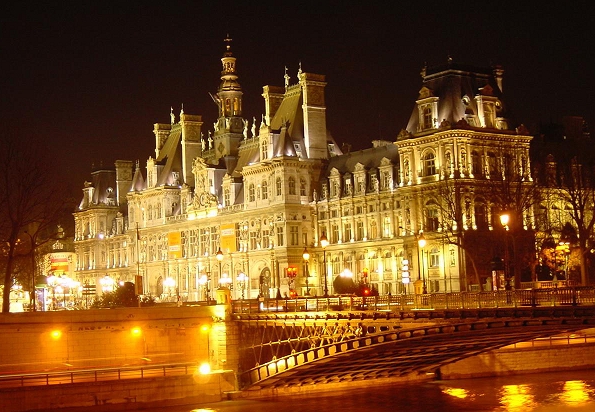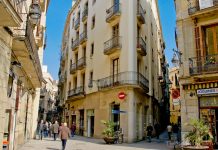Whether it is a vista that overlooks the Seine, the Eiffel Tower, Notre-Dame Cathedral,
or the view of mansard roofs and elegant buildings from your hotel window, it does not take much to convince someone that Paris is one of the world’s most attractive cities. The riches of this French capital are unsurpassed. Whether you choose to check out the fashion-conscious, bourgeois, bohemian, and historical or artsy features of Paris, this city is sure to thrill and inspire you.
Paris has a very large number of interesting sites and areas to visit. We will describe some of the most popular areas of the city, although our list is far from exhaustive. All of these areas of the city are sure to enthral and inspire you since Paris is truly one of the most captivating cities on earth.
Eiffel Tower Area
This is one of the most prestigious areas of Paris. This area is the home of the French bourgeoisie and ex-patriots who are well-heeled. Each elegant block provides a view of France’s ultimate symbol, the Eiffel Tower.
Presiding over the south-western portion of Paris, the Eiffel Tower was thought of as an eyesore when it was first constructed in 1889. Nowadays, it is an icon that is beloved, particularly in the evening when thousands of lights twinkle and sparkle at its apex each hour, and the searchlight rotates across the Parisian night sky.
There are additional sights here as well, most notably the Hotel des Invalides, which is a sprawling baroque edifice with a golden dome which towers over Napoleon’s tomb. The Palais Bourbone is along the river and it is the French Parliament’s seat. Designed in the 18th-century it emulates the architecture of the ancient Greeks. Close by, is the modern, Musee du Quai Branly, which was designed by Jean Nouvel, a well-known French architect. In addition, you should visit the Musee Rodin, where outsize sculptures, are placed along the garden and the Hotel Biron’s interior, which was once the artist’s workshop and home.
Champs-Elysees
The Champs-Elysees remains the most well-known avenue in the city, and one of the most well-known in the world. Like London’s Piccadilly Circus or New York’s Times Square, the Champs-Elysees inspires bravado. Some Parisians complain that modern chain stores and fast food restaurants have detracted from the avenue, but others not, and that there is still something available for everyone. If you are unable to afford to dine at Laduree, there is always Burger King.
The Arc de Triomphe anchors the Champs-Elysees and it is a monument that Napoleon built to himself. At the opposite end of the avenue, the Grand Palais hosts many of Paris’ best art exhibits. On the other side of the street the collection of art at the Petit Palais is free and there is a quaint garden café. Between this location and Place du Tracadero, which is a very busy traffic circle, you will discover a number of museums that are located in some of the most impressive buildings in Paris. The Palais de Chaillot complex houses the Cite de Larchitecture ET du Patrimoine, which will be of great interest to those that are interested in architecture. On the Other side of the places is the Musee de la Marine and nearby is the Musee Guimet which has an impressive collection of Asian art. On the Avenue du President Wilson is the Musee d’Art Moderne which has an impressive collection of twentieth century art and the collection is permanent and free.
Area near the Louvre
The neighbourhoods that surround the Louvre, from the Les Halles to Faubourg St-Honore are very contrasting from trendy to tres chic and the Louvre is in the centre of the activity.
The extremely posh Rue Faubourg St-Honore has been a destination for fashion for three hundred years and it is as popular today as when royalty shopped here. Almost every chic boutique has a presence here, and this is the location of some of Paris’ finest hotels. This was once the neighbourhood of royalty and it is now home to the President of France and the British and American ambassadors. Just to the east, Les Halles had evolved into a booming area with expensive shops, cafes and apartments and there are bars that are centred on Rue Montorgueil, which is one of the oldest market streets in the city.
Eastern Paris
In the past, the Bastille was the biggest attraction in this area, which is the home of the French Revolution. The rather small streets that emanate from the Place de la Bastille are still busy in the evening, with music clubs, bars, and the top-notch Opera Bastille, but nowadays the incipient neighbourhoods that are further away are the new draw. They have evolved into the hippest and hottest destinations in Paris. The Canal St-Martin which was once rather dilapidated, is now a trendy place that is brimming with cafes, funky bars, boutiques, and art galleries. To the south on the rues St-Maur, JeanPierre-Timbaud, and Oberkampf designers and artists have set up and they are buying apartments here that are still affordable, at least for the time being.
The Islands
In the heart of the city, and traversing the Seine with several bridges are two rather small islands, namely the Ile de la Cite and the Ile St-Louis. These islands are a great place to start your Parisian visit, with excellent views in all directions. The Ile de La Cite is home to the famous Notre-Dame cathedral and to its east is the very exclusive Ile St-Louis which is home to small shops, cosy restaurants, and charming hotels.
The Latin Quarter
The Latin Quarter is the centre of the Parisian student experience and it has been this way for an excess of eight hundred years. The oldest university in France, La Sorbonne, was started in the Latin Quarter in 1257. The name of this area is derived from the fact that Latin was the language of academia for students who arrived here from across the European continent. Nowadays, the area is loaded with inexpensive bars, cafes, and shops.
















